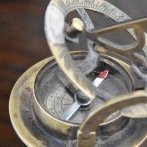-
Posts
10 -
Joined
-
Last visited
NQ-Entropy's Achievements
-
 Walter reacted to a post in a topic:
Voxel and Venting : What does the Game Design team think ?
Walter reacted to a post in a topic:
Voxel and Venting : What does the Game Design team think ?
-
 InvestorStallone reacted to a post in a topic:
Voxel and Venting : What does the Game Design team think ?
InvestorStallone reacted to a post in a topic:
Voxel and Venting : What does the Game Design team think ?
-
 CptCabalsky reacted to a post in a topic:
Voxel and Venting : What does the Game Design team think ?
CptCabalsky reacted to a post in a topic:
Voxel and Venting : What does the Game Design team think ?
-
 Shaman reacted to a post in a topic:
Voxel and Venting : What does the Game Design team think ?
Shaman reacted to a post in a topic:
Voxel and Venting : What does the Game Design team think ?
-
 Koriandah reacted to a post in a topic:
Voxel and Venting : What does the Game Design team think ?
Koriandah reacted to a post in a topic:
Voxel and Venting : What does the Game Design team think ?
-
 TobiwanKenobi reacted to a post in a topic:
Voxel and Venting : What does the Game Design team think ?
TobiwanKenobi reacted to a post in a topic:
Voxel and Venting : What does the Game Design team think ?
-
 Akroma reacted to a post in a topic:
Voxel and Venting : What does the Game Design team think ?
Akroma reacted to a post in a topic:
Voxel and Venting : What does the Game Design team think ?
-
 Quaideluz reacted to a post in a topic:
Voxel and Venting : What does the Game Design team think ?
Quaideluz reacted to a post in a topic:
Voxel and Venting : What does the Game Design team think ?
-
 McXerXes reacted to a post in a topic:
Voxel and Venting : What does the Game Design team think ?
McXerXes reacted to a post in a topic:
Voxel and Venting : What does the Game Design team think ?
-
 Barbecue95 reacted to a post in a topic:
Voxel and Venting : What does the Game Design team think ?
Barbecue95 reacted to a post in a topic:
Voxel and Venting : What does the Game Design team think ?
-

Voxel and Venting : What does the Game Design team think ?
NQ-Entropy replied to Knight-Sevy's topic in General Discussions
Hello there, First off, thanks for the feedback. So there's a couple of different things to touch on here: The internal balance of shields sizes CCS/honeycomb health vs Shield Health per mass Venting I’ll try to address in that order but they will mesh a little since they have some obvious links. First of all smaller shield sizes are at an advantage in regards to HP/mass. So something to keep in mind is that as you go up in size, as it pertains only to shields, you are losing out on the HP/mass ratio (in simpler terms, each HP weighs more on larger shields). This is an inbuilt advantage smaller sizes simply have. However, the main and primary reason we have different shield sizes at all, is to support constructs of varying sizes and mass. This is the key center-point around which everything else mostly revolves. If you are intending to make a larger, heavier construct, that is going to trend towards or go past the max mass, then the large shield becomes the obvious choice. However, should you want to make something smaller, more agile, and quicker, you may start to use shields of smaller sizes. We already see people experimenting with constructs of smaller sizes using S and M shields to take advantage of the speed, this is a great direction, as long as the pendulum does not swing too far in the favor of smaller constructs. Now, if the weight penalties do not sufficiently affect the design of the ship, and large shields are still too mass effective even on smaller designs. That's a subject we will continue to address. We do not want to see S designs using exclusively L shields because the additional mass from larger shields doesn't matter in regards to acceleration, max speed, and rotation speed. To answer your question clearly, there is no direct goal for an M shield and an equivalent 95t of voxel to be worse, equal, or better than an L shield and I’ll try to explain why as we go. You should take the shield of the size that makes sense for the design of your ship. If you have the mass available, or are willing to “spend” the mass to have a larger shield, then go for it. Don't want to get into the venting subject too quickly, but using an M with a bunch of honeycomb could allow you to vent once or twice during a battle, especially on a lighter design that can also evade some damage. Maybe the balancing on that isn't perfect, but it should be an option. At the end of the day the inbuilt advantage of an M shield over an L shield is that it's significantly lighter. You say it's always worth going to an L shield because M+HC is worse in HP, maybe this is the case (more on that later) but the point is that for that 95t you could probably build out a good part of a fully equipped construct, allowing you to have a quicker, more agile construct with a superior max speed, that's the upside. Talking concretely in regards to the mass, if I made a competitive light-ish design with an M shield around 250t ( I don't have one on hand, this is probably on the lighter side after the changes). I'm going about 38-39k km/h max speed, just switching from an M shield to an L shield, I drop down to about 35k km/h. Now adding an extra 95t to a 250t design is probably going to seriously hurt my acceleration as well, so now I'm probably at least looking at redoing my engine setup, which likely adds some more mass as well. So now the question is more along the lines of, do I prefer an extra 5mill HP from the L shield, or about 5000-6000km/h extra max speed and some extra rotation speed. Well that's a question I’d love feedback on, maybe the max speed and rotation speed isn't enough, I could see that. Secondly there could be an advantage to being able to “modulate” your weight while still gaining some tankiness from honeycomb. An M shield with some honeycomb unlocks some venting on that design, while retaining some/most of the mobility. In regards to your reasoning about M vs L shields. Roughly you're going from “it only makes sense to use the largest shield mass wise, so I can never vent on xs-m because I'm not going to be using voxels on anything smaller than the L”. Well honestly, I don't particularly agree with that, at least not in theory. The interest of voxels is that it's scalable, and you can choose how much voxel you think you need. If you're going to use an M shield because that makes sense for your design mass wise, you don't “have” to use 95t of honeycomb. You can use 30t of a good hc over your ship. That's already going to give you a chunk of armor to help you get some venting going, and probably not endanger your cross-section too much. If that honeycomb buys you enough time for 2 vents (probably optimistic), then you’ve essentially caught up on an L shield in raw shield HP and you’re operating at more than half the mass. Now maybe that's not viable, maybe the honeycomb itself is too weak and even reasonable quantities of honeycomb get blown apart too quickly, that's possible and that's something we can look at. Perhaps at that point the subject is more that voxels are generally weak. It's also important to note that in regards to your “real HP”, some amount of the incoming hits are also going to be hitting elements, elements that can be repaired which can give you more tankiness down the road. That means that when comparing raw HP to CCS, you have to take into account that CCS is counting every hit no matter where it's going, as opposed to your raw voxel HP which will, in effect, have additional health from elements. For point 2, there's a couple things to say here. Shields are not inherently in competition with honeycomb, as mentioned we don't want them to be magnitudes apart in terms of HP because it wouldn't make sense, but fundamentally they are supposed to be complimentary. Now in regards to your chart and conclusions. You didn't quite explain what “mean raw HP” is but I can guess it's the actual HP value of the deployed m3 HC multiplied by the average resistance, or at least I get close enough to your numbers using that. Internally, in our tests using real ships CCS almost always goes first as opposed to the direct destruction of the core, I’d say in general this is situational depending on the design of the ship. In my experience, when constructs actually have a good amount of voxels, it's very difficult to dig your way to the core, and between the HC and the elements and the (occasional, hopefully fewer and fewer) lost shot, I believe that most of the time, you can count on your CCS HP being your “real” HP bar. If that's not the case, especially on ships that have a good amount of HC, I’d love to see/hear more about it, since that would be contrary to what we’ve tested. Perhaps certain voxels are outliers. My gut feeling is that in the “nano-age” during which CCS was introduced and voxels were rebalanced, people haven't been using voxels a ton in pvp. The goal is for that to change and honestly, if people start using voxels in some quantity, that's already good progress. If it does come out that cheaper voxels, or certain cheap voxels are always way better than more expensive voxels, I'll be more than happy to take a look at that (and to be honest, I’ve started already since I had to look at a bunch of stuff for this). Lastly on this, you’ve defined that plastic is the best material on the basis of it having the most “mean HP” for the mass. That may be the case, but seeing how much effort players have put into reducing cross-section at almost any cost, I don't think 6700 m3 of plastic is always going to be the best solution. For the last point in regards to venting, I feel like I’ve partly answered the question already but I’ll answer more broadly. Venting isn't something that will or needs to be used. It's a tool at your disposal and it's up to you to figure out how and when you're going to use it depending on the situation and the design of your ship. In contrast it's our job to make sure that those avenues can exist in the game. In view of that, lighter ships now can try to disengage using their speed and try to get away and disengage to vent and come back, some ships may have honeycomb to tank on the CCS, some ships may not be able to reliably vent. If you design your ship in such a way that it cannot vent, then that's on you. However, if it is the case that there are NO competitive designs that allow you to vent at all, I agree that's a problem we need to change. It will come down to the design of your ship, and it's possible that venting will be more usable in certain situations, and certain circumstances than others. For example, I don't expect smaller and lighter ships to have enough CCS/voxels to tank more than a couple hits (let alone all the elements that will die on a compact design) so if they can't escape the firepower using their speed/agility, they are likely dead. But who knows, it might be worth it now to dedicate some amount of HC on ships, specifically to be able to tank a handful of shots to get some shield HP back, even if you don't manage a full cycle off. Essentially from my perspective, if you go no honeycomb, you are accepting that venting is going to be a tougher proposal than if you had dedicated some mass to HC protection, there's a tradeoff there. Now maybe that tradeoff isn't balanced, and there's one obvious better choice than the other, in that case we will take a look (that was sort of what was happening up to 0.29, there wasn't much point to using HC, but I think between the shield mass and health changes, and the speed changes, HC could have merit again in at least some designs, but maybe it's not enough). For an example on a relatively light design, even just 100m3 of that grade 5 titanium is going to give you around 1.2milll CCS health for 4-5~ extra tonnes. Is that enough to tank serious damage for a while? No, probably not. Is it enough to absorb a couple hits as you try to pull out of range, get your transversal speed up and start venting some HP back, probably yes. The downside is your cross-section may suffer and you'll lose some speed (honestly the speed loss won't be much, even at the most severe parts of the speed curve). Is it worth it? I’d say so yeah, in some designs and some situations, especially now that heavy L ships can’t easily rotate to keep up with smaller constructs, having a slightly larger cross-section probably isn't such a big deal in certain scenarios now. To be fair in regards to that point, I agree that on lighter and more compact constructs, the damage dealt to elements will sometimes be what ends up killing you rather than CCS, or even the core being killed. If you take a nasty hit that blows up half your elements, you are essentially dead. My question is are you able to use some HC, to reduce the chances of a good hit taking you out of the fight entirely. I did a quick test, put up 50m3 of grade 5 titanium and blasted it with a fully talented laser L. It took 3 shots to get through and kill the core I had placed just behind the material. To be honest though, based on my hit chance on a totally immobile target with zero cone or range issue, I would actually expect an actual S design to take almost 0 damage from L weapons. The shield and the CCS at that point is more of an insurance policy for the occasional hit, or to fight off other smaller constructs. There's also something to be said about balancing cross-section vs compactness. Not having all your elements in the same spot, even on smaller designs, means a single shot has less chance to obliterate half your elements. Anyway, I'm just spitballing on a lot of things, I certainly don't have all the answers, and likely there's some things I’ve missed, or some things I've overestimated the importance of or underestimated the importance of. Now to address your “problems to be solved” directly as a conclusion of sorts. Point 1: In regards to this point, if people start using any honeycomb at all it’ll be a good direction. Once we get to the point where we’re saying “we’re using HC and these honeycombs are all clearly better than these honeycomb”, we will be in a good place to start addressing HC internal balancing. The second thing is I do currently believe that especially on larger ships, CCS is a better representation of health than raw HP, and this is likely the opposite on smaller ships. Point 2: I‘m not totally set on this. Unplayable seems like a strong word here. I think lighter, smaller constructs have more opportunities now to disengage from fights in order to vent, or potentially exploit larger ships' slow rotation to stay out of the cone of the guns. Additionally, in my mind, some honeycomb can be a valuable addition to smaller designs, to give yourself some room to vent. However, If this isn't enough, we could explore more powerful and quicker vents for smaller shields, that's certainly a possibility. Point 3: Maybe, I’ve gotten some info by looking into it again today, and it's possible some changes can come down the line on this. In the past we’ve had the opposite issues, so it's possible we went too far. I know this is a big blob, I hope my numbers were right, my brain is a little hazy, and hopefully I’ve answered most of your questions and made this a little clearer for you guys. Thanks.








